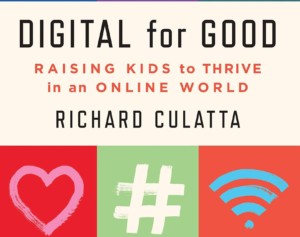Improving Urban Education Options: A Digital Portfolio Approach

In preparation for a community conversation, an urban newspaper publisher asked me what I would do to dramatically improve academic outcomes in his city. Here’s a quick three part answer:
1.Build support for high expectations. Everything good in education starts with expectations clearly communicated. The Common Core State Standards are helping to clarify real college and career ready standards. The secret is bringing them to life for the community—making high expectations visible for teachers, parents and students. Building support for high expectations is a great place to use outside voices of employers and higher ed representatives. The fact that reported proficiency levels are likely to drop as new standards are implemented demands a community conversation. Administrators can model Common Core tasks by writing about reading challenging texts. Recognizing student work that reflects Common Core expectations in a portfolio of actor papers is another great strategy. Achieve published a comprehensive roadmap to implementing Common Core State Standards.
2. Create a high quality portfolio of options. The first step in creating a system of quality options is use schools results to define the relationship with the school district: high performing and autonomous, improving with support, or scheduled to be closed and replaced. After triage, it’s time to drive school improvement and new school development. Here’s a white paper that describes Good Urban Schools: A Portfolio Approach. Center for Reinventing Public Education has a whole portfolio of reports on implementing the portfolio strategy. This is the best source of advice for urban education leaders.
3. Phase in the shift to personal digital learning. Districts should build a three year plan to create high access environments, support the adoption of blended school models, and attract new online options. School improvement and development offer a great opportunity to incorporate models that combine the best of online and onsite learning. As outlined in Digital Learning Now, every student should have access to a digital portfolio of great teachers and great content. Districts have about 26 months to get ready for online assessment. Implementation will require a relatively high level of access and adequate broadband. As recommended bySETDA, schools should have Internet connections of 100 Mbps per 1,000 students and staff by 2014‐15 and of 1 Gbps per 1,000 students and staff by 2017-18.






Will Herring
Hey Tom,
I have enjoyed reading your posts about portfolio approaches for urban schools and I think they have merit. Parents should have as many options available to them as we can reasonably provide. I realize this conversation is about urban schools, but the manner in which you describe the plan makes me think you feel confident in the system you outline for most school systems (administrators who offer a menu of schools/programs for students, funding that travels with students, teachers identified by merit v. longevity, & an involved community with high expectations). I want this to work for my area so please offer some advice. How would you overcome the geographical difficulties presented within rural districts? If blended or FT online options are the answer, how do we overcome the civil rights issues of either students who lack connectivity or the transportation to get to cross district specialty programs? Multiple “academies” within a single facility?
Also, as a high school educator, I have a concern about your necessary condition for successful creation of successful schools as you outline in the section, Building Support for High Expectations. We all recognize the probability that proficiency percentages will decline as the Common Core is implemented. I think at the secondary level that means that the dropout rate will increase at about the same percentage; unless we allow those students we determine are “not proficient” to graduate. Those of us in the field of education can that there is a “long-term” in which students will experience a net benefit from higher standards. We can see that holding students back from graduation is for their benefit if they are unprepared for citizenship/employment in the 21st century. But, the parents and students that see high school graduation as a finish line most certainly will not. How do you balance the two? High expectations for the future versus the reality of initial failure?
-Will Herring, Dr. Setser’s ECI 509 at NCSU
Dave Walsh ECI 509-Dr. Setser
Hi Tom,
I am very interested in your post since we (NC) are switching over to the Common Core next year and the fact that I work in a magnet school in downtown Raleigh. I agree that we need to be more visible and have our high expectations shared with the community and that is one of the missions of my school. We are a museum magnet school who invites the community in for our Gallery Walk- project showcase. One of the big draws of our school is that we offer different and authentic experiences, which is closer to the portfolio model than the high stakes testing, which we still have. We try to work in the 3 R’s-(Good Urban Schools article) through performance, technology and building museum exhibits for an authentic audience. We do serve a low-income/high-minority population but we enhance the classroom with study trips, self expression and the ability to interact and show what they know by using more than just tests and quizzes. This enables the kids to have choice and shine in ways they wouldn’t in a traditional setting. This takes extensive professional development and a lot of energy, but it can be very rewarding.
Thank you,
Dave Walsh